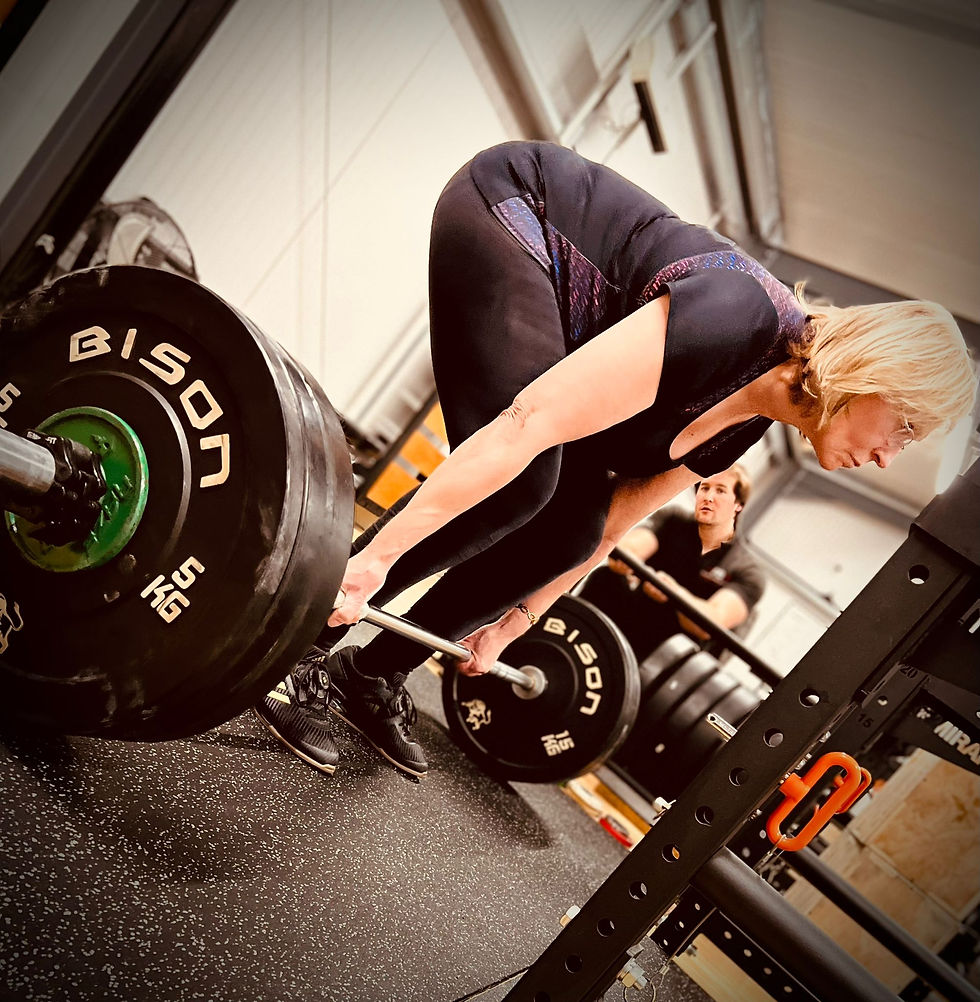Hypertrophy: Why Muscle Isn’t Just for Bodybuilders
- Paul Breheny
- Sep 18
- 4 min read

Say the word muscle and most people picture flexed biceps, fake tan, and bodybuilders posing on stage. It’s an image that feels a world away from what most people in their fifties or sixties care about. But here’s the truth: muscle isn’t a costume you put on for show. It’s one of the most practical investments you can make in your health. More than that, it’s protection — against weakness, against fragility, against that creeping sense that life is getting harder than it used to be.
The everyday case for muscle
Think about the tasks that fill an ordinary week. Carrying the shopping in from the car. Standing up from the sofa without a grunt. Getting through a day on your feet and still having the energy to meet friends in the evening. Those things feel easy when you’ve got muscle in reserve. They feel draining when you don’t.
That’s the simple role of hypertrophy — the technical word for growing muscle. It’s not about vanity. It’s about creating a buffer so the effort of daily life doesn’t wipe you out. More muscle means more capacity: every task feels like it costs you less. That’s why researchers often call it “metabolic currency.” With muscle, you’ve got money in the bank. Without it, you’re overdrawn all the time.
Why it matters more as you age
Now here’s the part people don’t realise: as we get older, the body gets less responsive to the signals that build muscle. It’s not impossible to grow, but the volume knob is turned down. Scientists call this “anabolic resistance.” What it really means is you have to be more deliberate. Training needs to be regular, effortful, and paired with enough protein to give your muscles the raw material to adapt.
That’s why losing muscle is often behind the “sudden” loss of independence people see in later life. The staircase feels steeper, the suitcase heavier, the walk to the shops longer. It’s not just fitness fading; it’s muscle quietly disappearing. The good news is you can slow that process dramatically — and even reverse it — by training with resistance a few times a week and eating in a way that supports it.
How to train for muscle
There’s a lot of noise out there about the “right” way to train for muscle. You’ve probably heard the old line about “8–12 reps being the magic zone.” But the evidence — and the practical experience of coaches like may-self — shows that a wide range of rep schemes can work. Fives, tens, even sets of twenty can all grow muscle if you work them hard enough. What matters most is not the exact number, but that you take the set seriously and push close to the point where your muscles want to quit.
Here's a neat way of framing this: start with the minimum amount of work that produces results, and only add more if progress stalls. In other words, don’t drown yourself in volume for the sake of it. Two or three full-body sessions a week, each with a handful of big, repeatable movements, is enough to build a strong base. Squat in some form, hinge in some form, press, pull, carry. Nothing exotic, just the basics done consistently.
Food and recovery: the quiet drivers
Training is the signal, but food is the building material. If you want muscle to grow, you need enough protein. For most adults, that means aiming for somewhere around 1.6–2 grams per kilo of bodyweight per day. In plain English, that’s a good serving of protein — meat, fish, eggs, beans, or dairy — at each meal. It’s not extreme, and you don’t need to eat like a bodybuilder. You just need enough bricks to build the house.
Supplements can help, but only the boring ones matter. whey protein and creatine monohydrate — 1 to 4 scoops a day and five grams a day respectively — are still the most proven tool for strength and muscle. They're safe, cheap, and effective, especially as you get older. Beyond that, your biggest wins come from the ordinary: a diet of mostly whole foods, regular meals, and enough sleep that your body can actually recover. Stress, poor sleep, and endless busyness blunt the gains as much as any bad workout.
Muscle as protection, not vanity
When you zoom out, the argument for muscle isn’t about the gym at all. It’s about the life you want to live outside it. More muscle cushions your joints, stabilises your balance, protects your bones, and makes your metabolism hum. It means you can enjoy a weekend away without wondering how much the walking will take out of you. It means you can pick up your grandkids without hesitation. It means you can keep doing the things you love with the people you care about — and not have to think, “can I manage this?”
That’s the power of hypertrophy. Not flexing for a mirror. Not chasing veins and striations. But stacking enough strength and size to give you confidence that your body won’t let you down.
The takeaway
Hypertrophy has been given to the bodybuilders in our imagination, but it belongs to everyone. Muscle isn’t showy — it’s shock absorption for life. And it’s available to you at any age if you’re willing to train, eat, and recover with some intention.
Forget about bodybuilding. Focus on building yourself a reserve. Because the day will come when you’re glad you’ve got it — and when you do, it won’t be the mirror that thanks you. It’ll be your body, quietly carrying you through another day with ease.


Comments